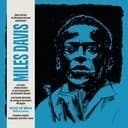Interval Formula and Scale Construction
D♯ Dorian follows the interval pattern W-H-W-W-W-H-W, yielding the notes D♯-E♯-F♯-G♯-A♯-B♯-C♯-D♯. The defining feature is the major sixth degree (B♯), which distinguishes it from D♯ Aeolian (Natural Minor) containing B natural. This subtle yet crucial alteration produces a significantly brighter, more optimistic minor tonality while maintaining emotional depth. The complete interval structure includes: root, major 2nd, minor 3rd, perfect 4th, perfect 5th, major 6th, and minor 7th. This balanced arrangement creates the quintessential Dorian sound—a sophisticated minor mode that bridges traditional melancholy with contemporary brightness. The raised sixth enables smoother voice leading and prevents the heaviness often associated with natural minor scales.
Relationship to C♯ Major and Modal Family
As the second degree of C♯ Major, D♯ Dorian shares identical notes but centers on D♯ as the tonal focus. This parent-scale relationship allows musicians to think of D♯ Dorian as "C♯ Major starting from D♯," simplifying visualization especially for instrumentalists comfortable navigating sharp keys. Because D♯ Dorian is enharmonically equivalent to E♭ Dorian, musicians often choose the flat notation (five flats) over the sharp notation (six sharps including E♯ and B♯) for easier reading. Compared to darker modes like D♯ Phrygian or the more exotic D♯ Harmonic Minor, D♯ Dorian occupies a balanced, versatile position in the modal spectrum. Understanding its relationship to more commonly encountered Dorian scales like D Dorian and A Dorian helps musicians develop comprehensive modal fluency and transferable concepts across all keys.
Practical Applications in Jazz, Funk, and Contemporary Music
D♯ Dorian appears most frequently in jazz compositions and improvisations over D♯m7 chords, though musicians typically encounter its enharmonic twin E♭ Dorian in written music due to its more readable five-flat notation. The mode's sophisticated minor sound fits perfectly in modal jazz, bebop, and contemporary jazz fusion contexts, where horn players and keyboardists appreciate the expressive possibilities. Funk and soul musicians utilize the Dorian mode for groove-based compositions, where the raised sixth creates melodic movement without losing the minor vibe—think James Brown, Tower of Power, and Vulfpeck harmonic approaches. The characteristic i-IV progression (D♯m-G♯) provides the quintessential Dorian sound, creating a sophisticated harmonic foundation that avoids traditional resolution. Contemporary R&B and neo-soul producers often layer D♯ Dorian melodies over sustained minor chord vamps, creating atmospheric textures that balance introspection with hope. Progressive rock and fusion guitarists working in sharp keys choose this mode for extended modal sections, though many will mentally translate to E♭ Dorian for easier visualization on the fretboard.
Learning Strategies and Practice Tips
Begin by contrasting D♯ Dorian with D♯ Natural Minor—play both consecutively, focusing intently on how the raised sixth (B♯ vs B natural) transforms the tonal color from darker to brighter. Most musicians find it helpful to practice this scale using its enharmonic equivalent E♭ Dorian, which offers significantly easier reading with five flats instead of six sharps. Practice over a D♯m7 or E♭m7 chord vamp, emphasizing the sixth degree in your melodic phrases to internalize the characteristic Dorian brightness. Study the principles from iconic Dorian compositions like Miles Davis's "So What" (originally in D Dorian) and transpose the concepts to D♯/E♭—this develops versatility across keys and deepens your understanding of modal relationships. Work with the characteristic D♯m-G♯ or E♭m-A♭ progression, exploring how the mode naturally fits these changes and creates the floating, non-resolving quality essential to modal harmony. For comprehensive modal development, compare D♯ Dorian with related modes in more comfortable keys like C Dorian, G Dorian, and F Dorian to build pattern recognition across the entire modal family.





